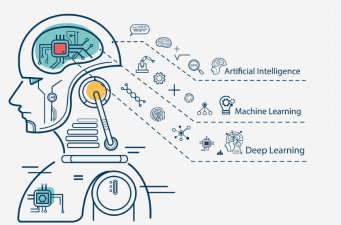Artificial intelligence (AI) has always been a mysterious and unattainable concept for us. However, with the development of technology, AI has gradually penetrated into our lives, from smart homes, voice assistants, to self-driving cars, AI is everywhere. So, have you ever wondered how AI learns?
Artificial intelligence (AI) has always been a mysterious and unattainable concept for us. However, with the development of technology, AI has gradually penetrated into our lives, from smart homes, voice assistants, to self-driving cars, AI is everywhere. So, have you ever wondered how AI learns?
Data: the "food" of AI learning
- Data collection and organization
The first step in AI learning is to obtain data, just like humans need to read books and listen to lectures. Data can come from various channels, such as images taken by cameras, sounds recorded by microphones, or text information on the Internet. But this raw data is often messy, like a pile of unorganized books. Therefore, AI needs to clean and organize the data first, remove erroneous information, and convert the data into a unified format. For example, if we want to train an AI to recognize faces, we need to collect a large number of face photos and ensure that each photo is clear and evenly lit.
- Feature extraction and understanding
After the data is organized, AI needs to extract useful information from it, just like humans extract key points from books. The traditional method is to manually design some rules to extract features. For example, in image recognition, information such as edges and colors may be extracted. But now the more popular method is to let AI learn features by itself. Through deep learning models, AI can automatically discover patterns from data. For example, when identifying photos of cats, AI will automatically learn features such as cats' ears and whiskers without having to tell it what these features are.

Algorithm: The "brain" of AI learning
- Model selection and training
After having data, AI needs a "brain" to process this information. This "brain" is the algorithm model. Depending on the task, AI can choose different models. For example, if you want to predict house prices, AI may choose a regression model; if you want to identify objects in an image, AI may choose a convolutional neural network (CNN). After the model is selected, AI needs to adjust parameters through training, just like students improve their grades by doing questions. During the training process, AI will keep trying and adjust its "thinking" based on errors until it can accurately complete the task.
- Prevent overfitting and ensemble learning
During the training process, AI may rely too much on training data, resulting in poor performance in actual applications. This phenomenon is called "overfitting". To prevent overfitting, AI uses some tricks, such as randomly discarding some data during training, or performing some transformations on the data. In addition, AI can also improve performance through ensemble learning, just like multiple experts discussing a problem together, and the final conclusion is often more accurate. For example, the random forest algorithm improves the accuracy of predictions by combining multiple decision trees.
Computing power: the "power" of AI learning
- Hardware acceleration and distributed computing
AI learning requires a lot of computing resources, especially deep learning models, and the training process may take days or even weeks. To speed up training, AI usually uses GPUs (graphics processing units) or TPUs (tensor processing units) for acceleration. These hardware are specially designed for parallel computing and can greatly improve computing efficiency. In addition, AI can also accelerate training through distributed computing, such as assigning tasks to multiple computers at the same time. For example, training a large language model may require hundreds of computers to work simultaneously.
- Software framework and open source community
AI learning cannot be separated from strong software support. There are many mature AI frameworks, such as TensorFlow and PyTorch, which provide rich tools and interfaces for developers to build and train models more conveniently. In addition, the open source community also provides a large number of resources for AI learning, such as pre-trained models, data sets, and toolkits. These resources have greatly lowered the threshold for AI learning, allowing more people to participate in AI research and applications. For example, the open source implementation of the BERT model allows developers in the field of natural language processing to quickly get started and innovate on its basis.
Summary
The process of AI learning can be simply understood as: obtaining information through data, processing information through algorithms, and accelerating learning through computing power. These three aspects work together to promote the continuous progress of AI. With the continuous development of technology, AI's learning ability is also constantly improving, and it is expected to play an important role in more fields in the future.

